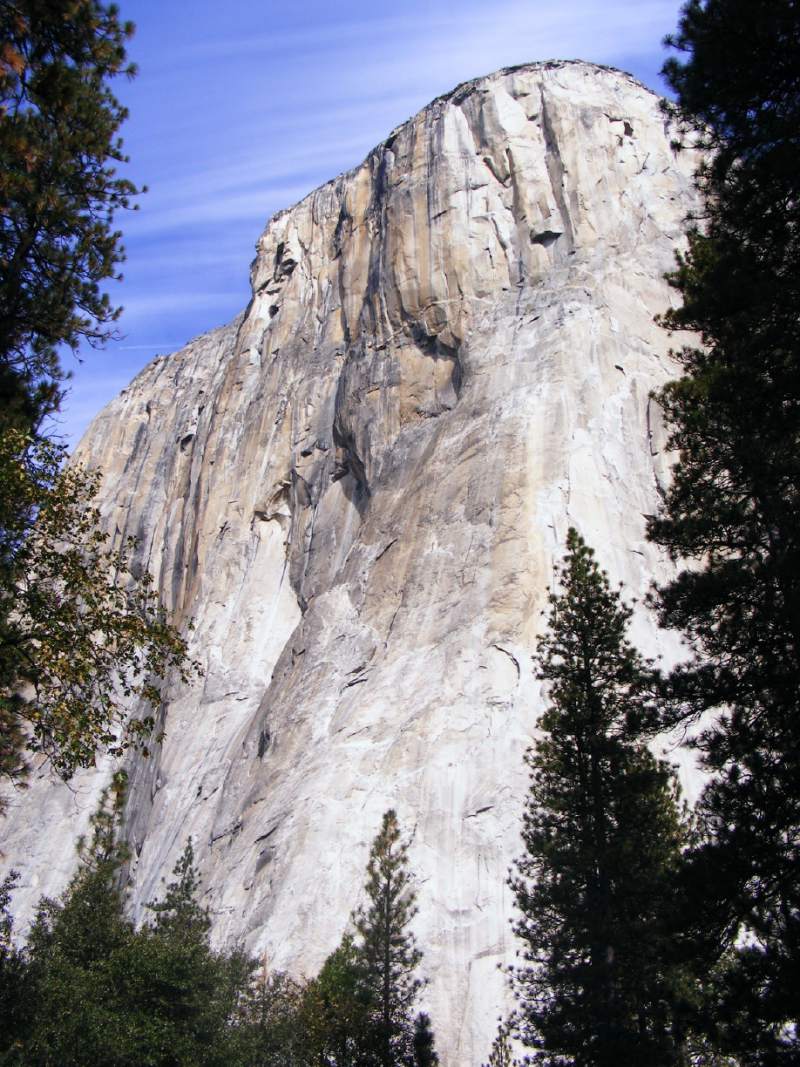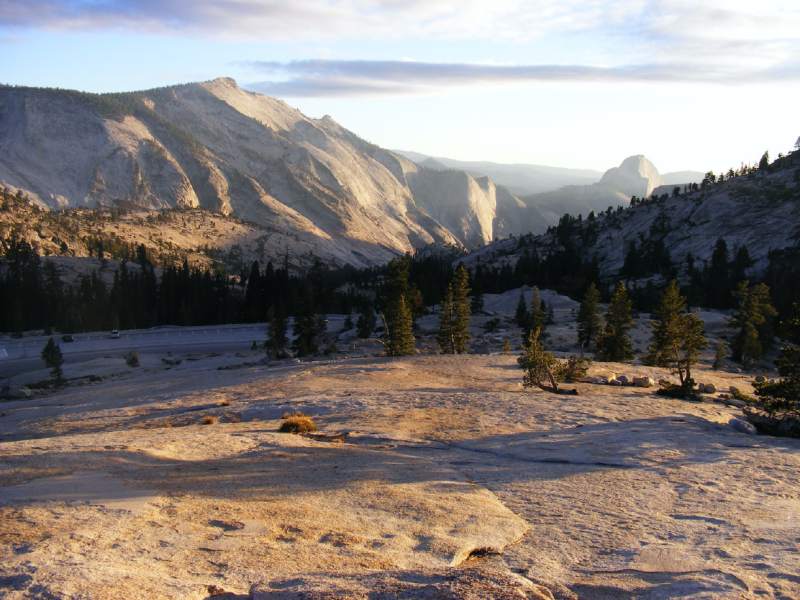Your time in Yosemite National Park very much depends on the time of year you go.
Visit Yosemite National Park on July 4, and you’ll encounter what can only be described as the hordes. In Yosemite Valley you’ll battle for parking places, bump elbows with other hikers on the trails, stand in long lines at the visitor center and dodge selfie sticks as you try to take in the sights.
Visit Yosemite on Nov. 4 and . . . it may just be you on the roads, on the trails, on the valley floor, alone with the soaring cliffs, whispering pines and meandering Merced River. If you are lucky enough to visit after the first rainfall or snowstorm of the season, you may also watch the waterfalls recharge.
The dates that bookend Yosemite’s off-season are not set in stone (so to speak). But if you visit any time in October, November or early December, you’re likely to find the park quiet and contemplative. Things pick up once the snow starts to fly in earnest, with winter bringing an uptick in visitors exploring the valley and backcountry on cross-country skis or snowshoes.
The weather will dictate much of what you can do in the park as the season drifts toward winter, but that’s OK. The suggestions listed below include activities suitable for rainy or snowy days as well as days full of sunshine.

Visit the Yosemite Museum
The oldest in the national parks system and celebrating its 90th birthday this year, Yosemite’s museum is small but artifact-rich. Among the permanent exhibits are items created by tribes indigenous to the park and surrounding areas prior to the arrival of prospectors in the 1850s.
The basketware is stunning, and often a park docent is on hand to demonstrate techniques used by the Ahwahneechee to create baskets, tools and other necessities of life. The current rotating exhibit, “Why Yosemite Collects,” is open through Nov. 1, and includes everything from fine art to taxidermied rodents and John Muir’s sierra cup. The museum is located in the heart of Yosemite Village.
Hike Through the Tuolumne Grove
While the more famous Mariposa Grove of Big Trees remains closed for rehabilitation until summer 2017, Yosemite boasts a pair of smaller giant sequoia groves well worth visiting. The Tuolumne Grove is the larger of the two, accessed via a 2.5-mile round-trip hike from the Tioga Road near Crane Flat. The grove contains about 25 mature sequoias, examples of the some of the oldest and most massive living things on the planet. The giant sequoias of Mariposa Grove, along with the monolithic architecture of Yosemite Valley, comprised the original park as preserved by Yosemite Grant Act in 1864. The smaller Tuolumne and Merced groves also played a role in the park’s history, serving as attractions along the wagon roads travelers braved to reach the valley floor in the early days.

Visit Hetch Hetchy
Located off the beaten path, Hetch Hetchy doesn’t see the crowds that Yosemite Valley does, regardless of the season. But it’s worth making the drive out Evergreen Road near the Big Oak Flat entrance to this second “yosemite,” for its beauty and its history.
The battle for Hetch Hetchy is widely acknowledged as the impetus behind the creation of the National Park Service and the modern conservation movement. It pitted wilderness advocates including John Muir against the city of San Francisco, which lobbied hard to dam the Tuolumne River at the mouth of the valley and won. The city erected the O’Shaughnessy Dam and a gravity-fed pipeline to funnel the Tuolumne into the city’s taps; San Franciscans still drink from the Tuolumne today.
You can walk across the dam and beyond, all the way to Wapama Falls, which flows year-round, tumbling 1,400 feet from the valley rim into Hetch Hetchy Reservoir.

Explore History on the Yosemite Valley Floor
Yosemite Valley is dotted with historic sites, some still visible on the ground, some slowly reverting back to nature. Much of the park’s history is contained in clusters of development bunched on the floor, each a hub of hotels, studios and other enterprises.
The Yosemite Chapel, Yosemite Cemetery and the LeConte Memorial Lodge (now the Yosemite Conservation Heritage Center) are picturesque examples of early development; other sites are harder to find, like pioneer settler James Lamon’s orchard and the remnants of the huge incense cedar that anchored the Big Tree Room in the old Sentinel Hotel.
A park map will show you how to link the boardwalks and trails in the heart of the valley to explore the sites, though you may have to ask an interpretive ranger for advice on where to find the big tree and orchard. The LeConte lodge/heritage center is only open in summer.
Check out the Climbing Walls
Yosemite’s rock-climbing season peaks as the weather cools in fall, when the exposed faces of monoliths like El Capitan and Half Dome aren’t baking in summer sun. The paved Valley Loop Trail, which makes a 13-mile circumnavigation of the valley floor, leads past Camp 4, Yosemite’s climbing “hostel,” where you can watch athletes hone their skills on boulders and short, vertical rock faces.
A couple of miles beyond the camp, the paved trail threads through rockfall at the base of what is arguably the valley’s premier big wall: El Capitan. You can follow climbers’ trails north through the woods to the base of the Nose of El Cap, which has been the scene of numerous climbing firsts. Staring up 3,000 sheer feet toward the invisible summit offers a provocative look into a daredevil culture that is integral to Yosemite’s identity.

Visit the Falls
A handful of Yosemite’s waterfalls flow year-round, and though the volume is low in the off-season, trails leading to the cascades won’t be clotted with visitors. Climb the fabled stairs of the Mist Trail past Vernal Fall to the top of Nevada Fall, then descend via the John Muir Trail, completing a lovely, popular, day hike of nearly 7 miles round-trip. Or head up to Glacier Point, where chances are you’ll find parking and have the aptly named Panorama Trail to yourself as you travel 5.4 miles out-and-back to an overlook of Illilouette Fall. And if you are lucky enough to arrive after the season’s first storms, Yosemite Falls might begin to spill, adding drama to a peaceful ramble to the bridge across Yosemite Creek at the base of the lower fall.
Drive the Tioga Road to Olmsted Point at Sunset
The slanting light of a setting sun fires the polished granite of the domes at Olmsted Point a soft orange. Views from the point open south and west toward the Yosemite Valley, featuring the rounded backside of Half Dome, and eastward across the Tenaya Lake basin. It was the last refuge of the Yosemite Indians in their battle to hold their homeland, and later an environmental battleground pitting conservationists, including famed photographer Ansel Adams, against the National Park Service, which would blast through more polished granite to improve the Tioga Road as part of its Mission 66 development plan.
f you time it right — that is, if the road is open and you start early — you can drive the length of the former wagon road, through Tuolumne Meadows and down the east side of the Sierra to Mono Lake and back. Just be sure to catch that amazing autumn light.

Climb Sentinel Dome
Views from the top of Sentinel Dome are panoramic and easily accessible. From the Sentinel Dome/Taft Point trailhead on Glacier Point Road, an easy 2-mile out-and-back hike deposits you on top of a flat-topped expanse of glacier-polished granite. Look north and west across the chasm of Yosemite Valley to take in all the landmarks: El Capitan, Yosemite Falls, Half Dome, the staircase of the Merced River and the crest of the Sierra Nevada.
Equally stunning views sprawl to the east and south. A marker on the summit identifies the highlights. If you want to add more mileage, follow the Pohono Trail from Sentinel Dome along the valley rim to Taft Point, then hitch back to the trailhead in a moderate 4.5-mile loop.
Visit Wawona
This is the quiet side of Yosemite, even in the high season. The historic Big Trees Hotel (formerly the Wawona Hotel) anchors the site, once the base camp for Galen Clark, Yosemite’s longtime guardian and pioneer among the giant sequoias. Though there’s no access to the nearby Mariposa Grove, the historic hotel and its grounds are worth exploring, and you can take a short or long hike on the nearby Chilnualna Fall trail.
Cocktails in Ahwahnee
The Majestic Yosemite Hotel may have been stripped of its historic moniker, the Ahwahnee, in an ongoing and controversial trademark battle, but no corporation or person can strip away Ahwahnee, which is what the Yosemite Indians called the Yosemite Valley before the arrival of the white man. In summertime, it may be impossible to find a seat on the patio of the upscale hotel’s patio, or in its dining room, but there’s a good chance you can end a day of off-season exploration in Yosemite National Park sipping a refreshing beverage and enjoying the iconic views.
Yosemite National Park in the Off-Season
The National Park Service typically closes some high-country facilities in winter, including Tioga Pass and the Glacier Point Road beyond the Yosemite Ski and Snowboard Area (formerly known as Badger Pass). But the off-season typically begins before that happens, so you may still be able to enjoy those amenities.
Check the park website, nps.gov/yose, for the latest. It also is a rabbit hole of information about the park, so cruise around and check out the options, including the video archives for Yosemite Nature Notes.
Tracy Salcedo is a Sonoma County-based outdoor travel writer. Contact her at laughingwaterink@gmail.com.











